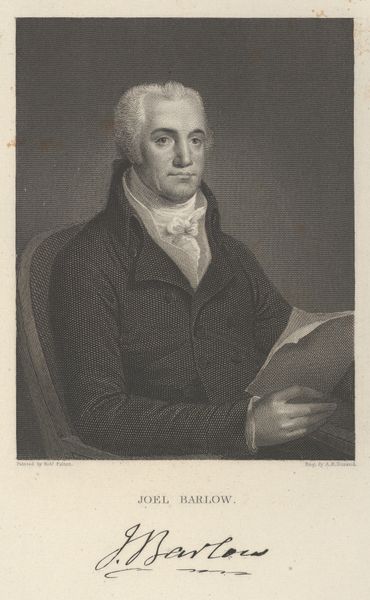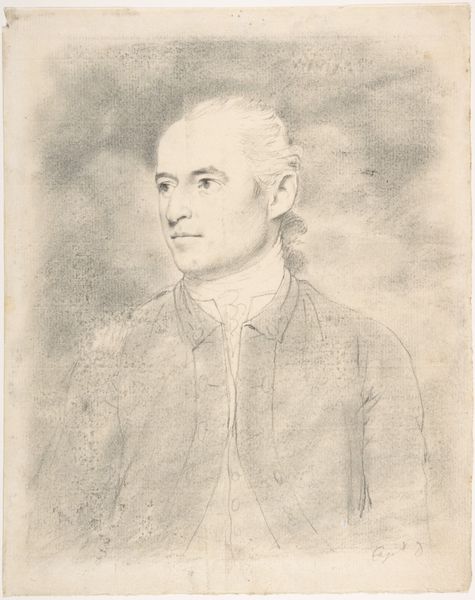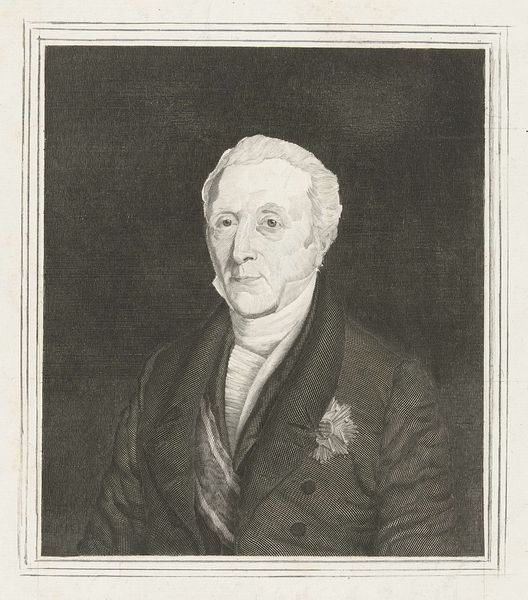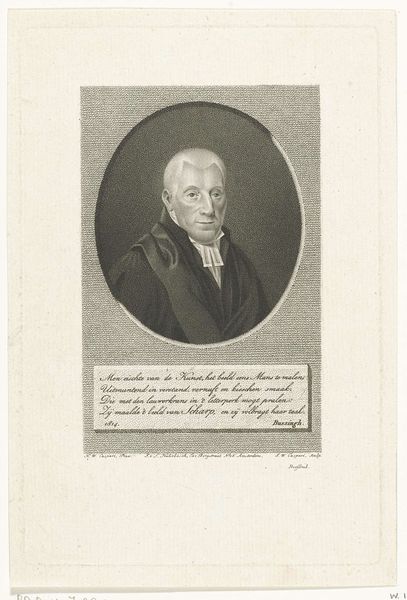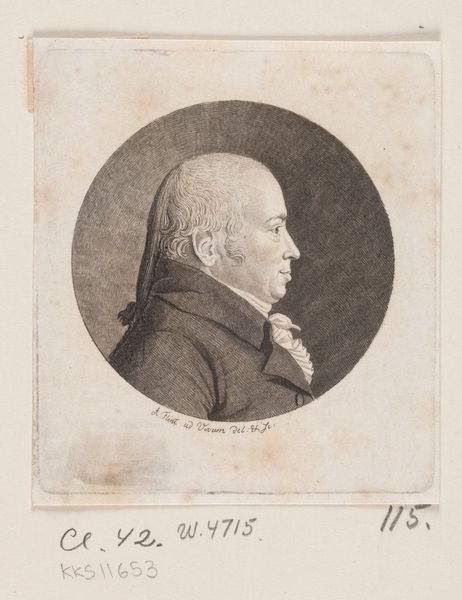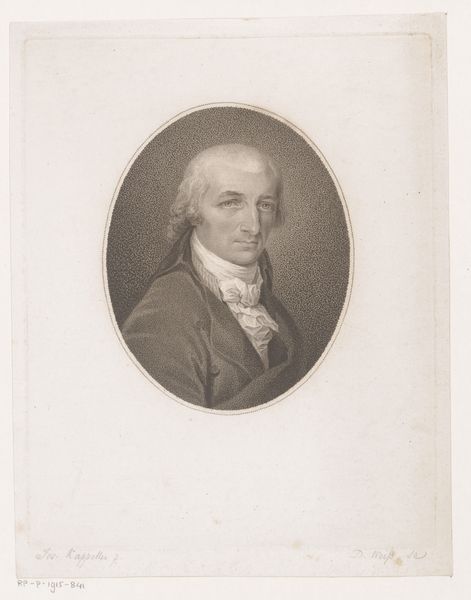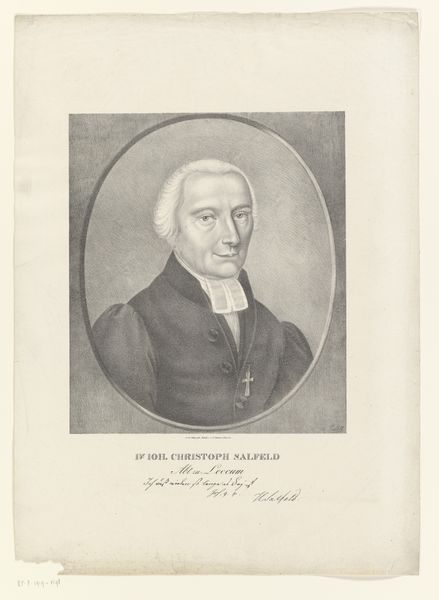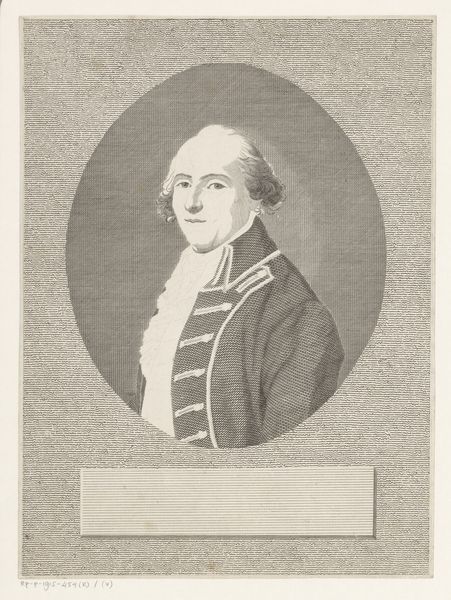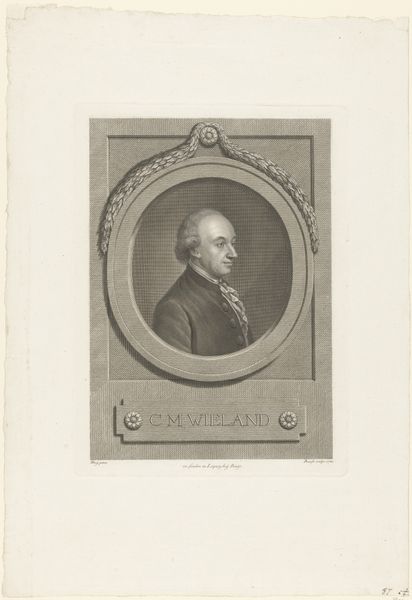
drawing, print
#
portrait
#
drawing
#
neoclacissism
# print
Dimensions: sheet: 10 1/8 x 7 9/16 in. (25.7 x 19.2 cm)
Copyright: Public Domain
Curator: Let’s turn our attention to this rendering of Lindley Murray. Crafted around 1827, this drawing is courtesy of Asher Brown Durand. It's currently part of the Metropolitan Museum's collection. Editor: Right, and I'm immediately drawn to the stillness of the portrait. It's incredibly composed; he seems almost captured in a suspended moment. Very classical, very reserved, and intensely...controlled, somehow. Curator: I see what you mean about control. It is interesting to look into Murray's life—he actually dedicated his life to the study and codification of English grammar. Perhaps that's part of why we're getting that feeling of measured discipline from his portrait. Editor: Absolutely, the image reflects the man! But there's something more than just 'discipline.' See the details of the face? The precise shading around his eyes, the controlled expression? It almost reads like a mask. What's hidden beneath that carefully constructed exterior? It feels archetypal to me... Curator: An intriguing thought! You know, given the Neoclassical style Durand adopted, there might be something to your 'archetype' idea. It's fascinating to consider this image not just as a record of a person, but of an entire era striving for order and reason. Editor: Precisely! That drive toward rational order, as you point out, might explain why I feel there's a certain rigidity in the overall composition. The tightly buttoned coat, the way his neck almost disappears within his collar...it all speaks to an impulse for concealment, even constriction. Curator: Which leads me to wonder if we are missing the subject’s complexity if we assume too much of it reflects personal preference. But that’s a testament to Durand's skill; he's offering a very deliberate depiction of societal ideals. Editor: Indeed! This portrait leaves us not just with an image of Lindley Murray but a lingering question about the tensions that underlie composure itself. What stories do such composed images conceal and how do those affect history? Curator: Ultimately, Durand’s interpretation pushes us to consider how external presentation intertwines with a sense of inner containment. It’s almost too intriguing for this one portrait. Editor: Absolutely, thank you so much. It gives you quite a lot to think about as you continue through the exhibit, and something to think about for portraits overall!
Comments
No comments
Be the first to comment and join the conversation on the ultimate creative platform.
